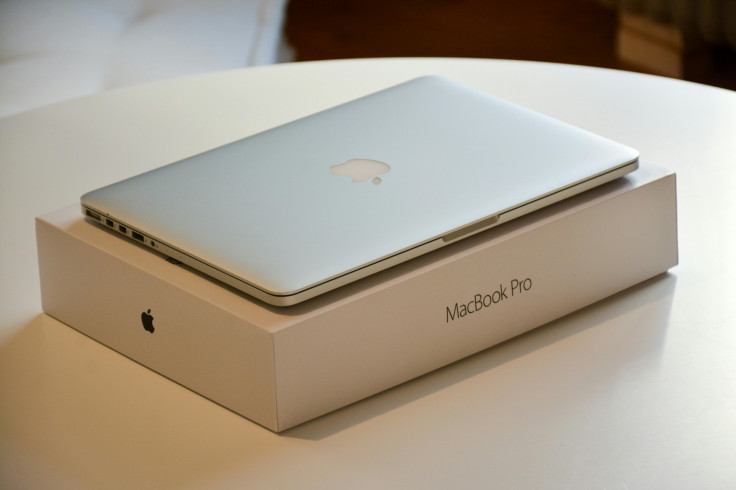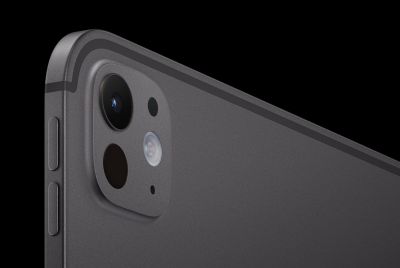M5 MacBook Pro Could Be Apple's Most Ambitious Laptop Yet — Touch, 5G and OLED on the Table
The core dilemma for consumers is whether to buy the imminent M5 model for power or wait longer for the likely M6 generation

The buzz surrounding the next generation of Apple's premium portable computer is reaching a fever pitch. If the rumours hold true, the M5 MacBook Pro could be a radical departure from the familiar design, bringing game-changing connectivity, a superior display, and a whole new way to interact. Is Apple about to deliver its most feature-rich laptop ever?
With the yearly, predictable reveal and arrival of the iPhone 17 now behind us, the Mac community shifts its attention to the rest of the year to see what exciting features the upcoming MacBook Air and MacBook Pro notebooks might hold. However, whispers coming from the supply chain suggest that the current generation will only see a limited number of new improvements.
The next round of MacBooks, powered by the M5 chip, is currently expected to debut around the first quarter of 2026, bringing new versions of both the MacBook Pro and MacBook Air. While these M5 models will certainly deliver a valuable boost in speed and battery endurance, they are widely regarded as an incremental, mid-cycle chip upgrade, rather than a complete redesign.
Apple’s next MacBook Pro enters production#Apple #MacBookPro #M5 #OLED pic.twitter.com/TVGPnTkZvl
— TechPP (@techpp) September 29, 2025
Apple's major plans for the MacBook will skip the M5 generation and arrive in late 2026 or early 2027 with a new chipset, an improved display, and new connectivity options.
The Next-Generation M6 Chip: Performance and Predictability
The most significant difference between this rumoured model and the expected M5 MacBook Pro is the next-generation M-Series Apple Silicon chip. While details about the release date of the Mac hardware are few and far between, the chip upgrade cycle has established a more predictable rhythm, mainly because Apple often introduces M-Series chips with its iPad Pro upgrades.
While not yet official, the M5 chipset is expected to begin shipping in the iPad Pro by the end of the year, before arriving in MacBooks in the subsequent quarter. According to a report by Forbes, Apple will use M5-series chips across MacBooks released throughout 2026, with a major upgrade to the MacBook Pro not expected until 2027.
🤯 Another Apple leak!
— XplorFeed (@XplorFeed) October 1, 2025
This time, the iPad Pro with the unreleased M5 chip showed up in Russian YouTubers’ videos! 🚀
A year ago it was the MacBook Pro M4, now the iPad Pro M5 — looks like Apple’s security team has an arch-enemy 😂
📱 13-inch, 256GB Wi-Fi, Space Black, made in… pic.twitter.com/XSheJkfQNd
The Apple Silicon M5 chipset is expected to debut in the iPad Pro before its launch in the MacBook Pro. An unboxing video of an M5-powered iPad Pro has already surfaced on YouTube from a Russian account.
Following the unboxing, the video shifts to a discussion of first impressions and performance benchmarking of the M5 chip. This anticipated performance gain raises the M5's single-core benchmark to match that of the premium M4 Max.
Even more powerful. Even more pro! The new MacBook Pro features the M4 family of chips: M4, M4 Pro, and M4 Max, Thunderbolt 5 ports with M4 Pro and M4 Max, and Apple Intelligence to really redefine what a laptop can do. pic.twitter.com/CifqdGEAJ2
— Greg Joswiak (@gregjoz) October 30, 2024
Mark Gurman of Bloomberg noted that the iPad Pro leak's most shocking element was not the hardware details but the breach itself. Although it is nearly impossible to completely hide all individual hardware information due to the supply chains involved, for a finished product to be 'in the wild' before its official launch is a rare occurrence.
A notable point is that Apple may not wait for the M6 series to introduce a significant MacBook upgrade, opting instead to use premium versions of the M5 series, such as the M5 Ultra.
Regardless of the naming, each generation of Apple Silicon has consistently delivered a performance boost of 15 to 25 percent, along with a corresponding increase in battery life. This trend is likely to continue as we await the major upgrade to the MacBook Pro.
Apple's Stance on Touchscreen and OLED
Two features remain conspicuously absent across the MacBook range, despite being standard in Windows laptops for nearly a decade. Apple maintains its strong opposition to implementing both OLED and touchscreen technology in its MacBook displays.
The lack of a touchscreen is a glaring omission. It's now standard on many Windows laptops, and users are inherently familiar with it from their smartphones and tablets. Many analysts suggest this familiarity with touch on large screens (the iPad's unique selling proposition) is the primary reason for Apple's opposition: to add it to macOS would fundamentally undermine the iPad Pro.
As iPadOS and macOS continue to converge in design, functionality, and app compatibility, Tim Cook and his team are positioning themselves, making touch input on laptops an inevitable next step.
Is It Time To Buy a New Macbook Pro?
The Apple MacBook line, particularly the MacBook Pro, has become less prominent since the transformative introduction of Apple Silicon M-Series devices in 2020.
Despite three subsequent Apple Silicon updates (with a fourth imminent), the chassis has seen only a minor, largely cosmetic redesign, which involved dimensional tweaks, surface coating changes, and the addition of a 15-inch MacBook Air model.
Wait for the next MacBook Pro if you prioritise maximum power. But if you desire genuinely new features — those that meet the specifications of professional Windows laptops — it is advisable to wait a bit longer.
© Copyright IBTimes 2025. All rights reserved.




















